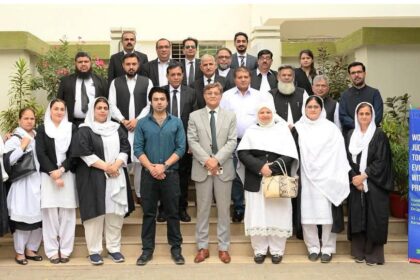An official investigative report into the recent Swat tragedy has identified significant administrative lapses, ineffective departmental coordination, and systemic weaknesses in safety protocols across multiple government agencies. In response, the Khyber Pakhtunkhwa (KP) Chief Minister, Ali Amin Gandapur, has ordered immediate disciplinary action against negligent officials, as well as a comprehensive overhaul of river safety measures aimed at preventing future tragedies.
The comprehensive 63-page inquiry, compiled and submitted by the Provincial Inspection Team to the Chief Minister, highlighted critical failures among various departments—including District Administration, Irrigation, Local Government, and Rescue 1122. In light of these findings, the Chief Minister has mandated strict disciplinary action within 60 days against those officials whose negligence or mismanagement contributed directly to the incident. Affected departments are instructed to expedite legal formalities to hold accountable those identified in the report.
Furthermore, structural reforms have been mandated within a 30-day timeframe. These reforms include formulating updated Standard Operating Procedures (SOPs), developing clearer building regulations, and implementing an integrated river safety framework. These new procedures will become legally binding immediately, reinforcing safe construction practices and ensuring greater preparedness against future hazards. Authorities will align these safety protocols within the next monsoon contingency plan through a centralized, coordinated effort.
To ensure accountability and effective implementation, an oversight committee headed by the KP Chief Secretary has been formed. This committee will translate the report’s recommendations into measurable Key Performance Indicators (KPIs) and regularly submit monthly progress updates directly to the Chief Minister’s Secretariat. This committee is also tasked with rapidly expanding Rescue 1122’s capabilities, training staff, and upgrading critical emergency services equipment.
A critical failure identified by investigators was poor coordination and communication among key departments including police, local administration, irrigation, rescue operations, and tourism authorities. Previous recommendations made by the Provincial Disaster Management Authority (PDMA) and district-level disaster units were inadequately enforced or ignored entirely. Additionally, during the disaster, early warning systems failed, contributing significantly to delayed response and increased severity. Poorly enforced or unclear regulatory frameworks for building codes along riverbanks exacerbated the disaster’s scale, with hotel management and tourist establishments criticized for failing to adequately inform visitors about imminent dangers. Rescue 1122’s efforts were hindered significantly by shortages of personnel, insufficient equipment, and delayed response times.
The report detailed further shortcomings including unclear responsibilities concerning riverbank safety, lack of clearly designated risk zones in vulnerable tourist areas, and weak enforcement of Section 144—critical legislation aimed at safeguarding the public during emergencies. Reacting promptly after the tragedy, provincial authorities launched a province-wide campaign against illegal structures and riverbank encroachments. Within ten days, 127 illegal buildings were sealed, unauthorized constructions covering 682 kanal were demolished, and encroachments identified on an additional 1,874 kanal of land—with clearance of 1,019 kanal already complete. Authorities have also surveyed and demarcated 609 kilometers of riverbed and installed 174 physical barriers as immediate preventive measures.
Going even further, under the newly approved River Rescue Plan, the government has announced funding of Rs66 million for 36 prefabricated rescue stations strategically positioned along riversides. Additionally, Rs739 million has been allocated to supply modern rescue equipment, Rs608 million approved for 70 compact rescue stations, and Rs200 million set aside for a digital monitoring and surveillance system. These critical infrastructure improvements are accompanied by strengthened coordination mechanisms between Rescue 1122 and local district administrations, intended to ensure swift and efficient emergency responses.
The decisive actions initiated by the Chief Minister in response to the report demonstrate a major shift towards accountability and public safety reform in KP. As this comprehensive overhaul is implemented, the coming months will critically test the government’s ability to convert its commitments into tangible safety improvements for residents and tourists throughout the province.











